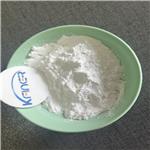Unlocking the Flavor Potential of Furaneol: Applications and Toxicity Considerations in the Food Industry
Dec 22,2023
General Description
Furaneol is a versatile compound used as a flavoring agent in the food industry. It has a sweet and fruity aroma, contributing to the flavors of various fruits and food products, including beverages, baked goods, candies, and sauces. However, studies have raised concerns about its potential toxicity. Animal studies have shown adverse effects at higher doses, such as lower body weights and increased incidence of pituitary adenomas in rats. Furaneol has also been found to be mutagenic in certain strains and induce genetic damage. Therefore, caution should be exercised when using furaneol, and further research into its toxicity is necessary.

Figure 1. Furaneol
Versatile Properties and Fragrant Odor of Furaneol
Furaneol is a chemical compound with various properties. It appears as colorless crystals with a melting point of 73-77℃ and a boiling point of 188℃ Its density is 1.049 g/mL at 25℃, and it has a vapor pressure of 0.81Pa at 25℃. Furaneol is slightly soluble in chloroform and methanol. It has a refractive index of n20/D 1.439 and a pka value of 9.62±0.40 (predicted). In terms of odor, furaneol is associated with sweet scents, including cotton candy, caramel, strawberry, and sugar. It has a caramellic odor type and is commonly found in pineapple and strawberry aromas. It can also be detected in foods such as guava, grapes, raspberry, rye bread, Swiss cheese, beef, beer, cocoa, coffee, tea, almonds, oatmeal, passion fruit, mango, soy sauce, and more. Furaneol is typically stored at temperatures between 2-8°C and is sensitive to light and temperature. It is considered to be a light-sensitive and temperature-sensitive chemical. Overall, furaneol is a versatile compound with a fruity aroma that contributes to the flavors of various fruits and food products. 1
Applications in the food industry
Furaneol finds diverse applications, particularly in the food and beverage industry. As a flavoring agent, it contributes to the rich aroma and taste profiles of various food products. In alcoholic beverages, furaneol is used at levels ranging from 0.54 ppm to 0.75 ppm, while in nonalcoholic beverages, it is employed in concentrations between 5.00 ppm and 80.00 ppm. Additionally, it is used in baked goods, chewing gum, fats, oils, frozen dairy, gelatins, puddings, jams, jellies, seasonings, flavorings, soft candy, and sweet sauces. These applications showcase the versatility of furaneol in adding desirable fruity and caramel-like flavors to a wide range of consumables, enhancing their sensory appeal. Furthermore, furaneol's role as a cigarette additive has also been reported. Beyond the food and beverage sector, furaneol may have potential uses in other areas such as fragrance and air fresheners. Its unique sweet and fruity aroma makes it a valuable ingredient in various consumer products, contributing to a pleasant olfactory experience. 2
Toxicity
Furaneol is a beige powder used as a flavoring agent and experimental medication. Despite its widespread use, studies have indicated potential toxicity. Furaneol has been reported to be mutagenic, generating superoxide and subsequently hydrogen peroxide, leading to metal-dependent DNA damage. Animal studies involving rats showed that at higher doses (400 mg/kg bw per day), significant effects were observed, including lower mean body weights and body-weight gains in both males and females. Additionally, the survival rate for males at this dose was significantly lower, attributed to an increased incidence of adenomas of the pituitary. While it was concluded that these adenomas were unrelated to the administration of Furaneol, further evidence demonstrated its mutagenicity to Salmonella typhimurium TA100 strain and induction of micronucleated reticulocytes in mouse peripheral blood. The dose-dependent induction of genetic damage after oral administration suggests the potential for adverse effects. Therefore, caution should be exercised when using furaneol, and further research into its toxicity is warranted. 2
Reference
1. Furaneol. National Center for Biotechnology Information, 2023, PubChem Compound Summary for CID 19309.
2. PubChem Annotation Record for Dimethylhydroxy furanone. National Center for Biotechnology Information, 2023, Source: Hazardous Substances Data Bank.
- Related articles
- Related Qustion
- Furaneol: Biosynthesis and Pharmacological Activities May 10, 2024
Furaneol, synthesized by yeast and bacteria in fermented soy sauce, possesses antimicrobial properties and activates odor receptors.
- Furaneol:Activity, Application and Chemical Studies Feb 28, 2023
As the king of spices, furaneol exists in food, tobacco and beverages, and has an obvious aroma-modifying effect, so it is widely used as a flavoring agent for food, tobacco and beverages.
Methyl 4-methoxyacetoacetate: Key in HIV drug synthesis, offers efficacy, safety, and versatile applications in organic chemistry.....
Dec 22,2023Organic Synthesis IntermediateEnarodustat is synthesised using Dichloropyridine as a raw material through the reactions of lipo-conversion, substitution, rearrangement, coupling and hydrolysis.....
Dec 22,2023InhibitorsFuraneol
3658-77-3You may like
- Strawberry Flavor Furanone
-

- $120.00 / 1kg
- 2024-05-16
- CAS:3658-77-3
- Min. Order: 1kg
- Purity: 99%
- Supply Ability: 20ton
- Furaneol
-

- $18.00 / 10kg
- 2024-05-07
- CAS:3658-77-3
- Min. Order: 1kg
- Purity: 99.9
- Supply Ability: 5000
- Furaneol
-

- $0.00 / 1kg
- 2024-05-07
- CAS:3658-77-3
- Min. Order: 1kg
- Purity: 99%
- Supply Ability: 50000kg





